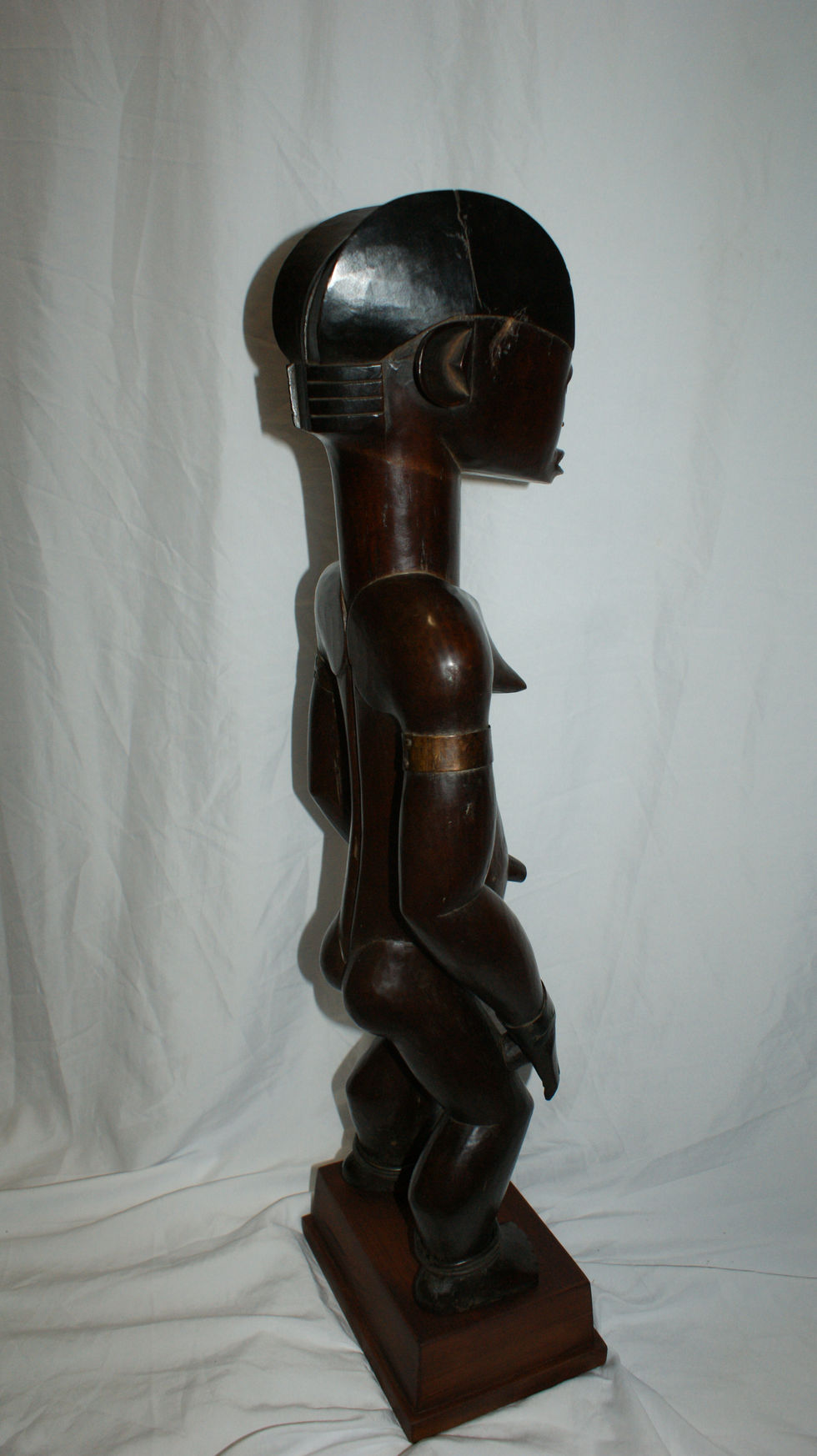W🌍RLD HISTORY
Create Your First Project
Start adding your projects to your portfolio. Click on "Manage Projects" to get started
Fang-Mabea Reliquary Figure
Project type
Statue
History
This specific figure is identified as originating from the Fang-Mabea subgroup, located in Cameroon. It stands at approximately 68 cm (26 ¾ in.) tall.
Reliquary figures like this one were carved by the Fang peoples of Gabon, Equatorial Guinea, and Cameroon. They were traditionally placed atop or near cylindrical bark containers (byeri) that held the skulls and bones of ancestors. These figures served as guardians of these sacred relics.
This demonstrates its journey through notable art collections, highlighting its recognition as a significant work of African art.
Cultural Significance
Ancestor Veneration (Byeri Cult): The core significance of Fang reliquary figures lies in the Byeri cult, a powerful ancestral cult central to Fang spiritual life. These figures embody the spirits of deceased clan leaders and important individuals, providing a visual and spiritual link between the living and the dead.
Guardians of Relics: The figures' primary role was to guard the ancestral relics (bones) contained within the byeri boxes, preventing ill-intentioned individuals from accessing or disturbing them. They were believed to harness the protective power of the ancestors.
Education and Initiation: Byeri figures were also used in initiation ceremonies for young men, where they served as teaching tools, transmitting knowledge about lineage history, moral codes, and cultural traditions.
Social Cohesion: By connecting individuals to a shared lineage and collective memory, the Byeri cult and its figures reinforced social cohesion and stability within Fang communities.
Ritual Practice: During rituals, the figures were sometimes brought out, admired, anointed with palm oil, and addressed with prayers and offerings, ensuring the continued benevolence of the ancestors.
Symbolism and Design
The design of the Fang-Mabea reliquary figure is highly stylized and imbued with rich symbolism:
Composite Form (Infant & Adult): Fang reliquary figures often combine features of an infant (large head, short limbs, rounded belly) with those of an adult (muscular torso, mature facial features). This duality symbolizes the continuity of life from infancy to ancestral wisdom, embodying the entire life cycle. It can also suggest the potent, youthful energy of the ancestor alongside their accumulated knowledge.
Enlarged Head: The disproportionately large head emphasizes the intellect, wisdom, and spiritual power of the ancestor, as the head was believed to be the seat of the soul.
Serene/Contemplative Expression: The face typically features a calm, introspective, or stern expression, often with closed or downcast eyes, conveying dignity, detachment from the mundane, and a focus on the spiritual realm.
Muscular Torso and Limbs: The robust, often athletic torso and well-defined limbs, despite the figure's squat stature, symbolize the strength and vitality of the ancestor, even in death.
Posture: The figure is depicted in a seated or squatting posture, with hands often clasped in front of the body (as seen in some Fang figures, though not perfectly clear in this specific image due to shadow/pose). This posture signifies vigilance and readiness to protect the ancestral relics.
Patina: The dark, shiny patina (surface sheen) is a result of repeated ritual anointing with palm oil over time. This oil not only preserved the wood but also imbued the figure with spiritual potency, acting as a "living" surface.
Headwear: The specific carved headwear or hairstyle contributes to the figure's unique identity and may signify status within the Mabea subgroup.
Central Belly Button (Umbilicus): A prominent navel often symbolizes the lineage's origin and its connection to the earth and ancestral lands, emphasizing continuity.





